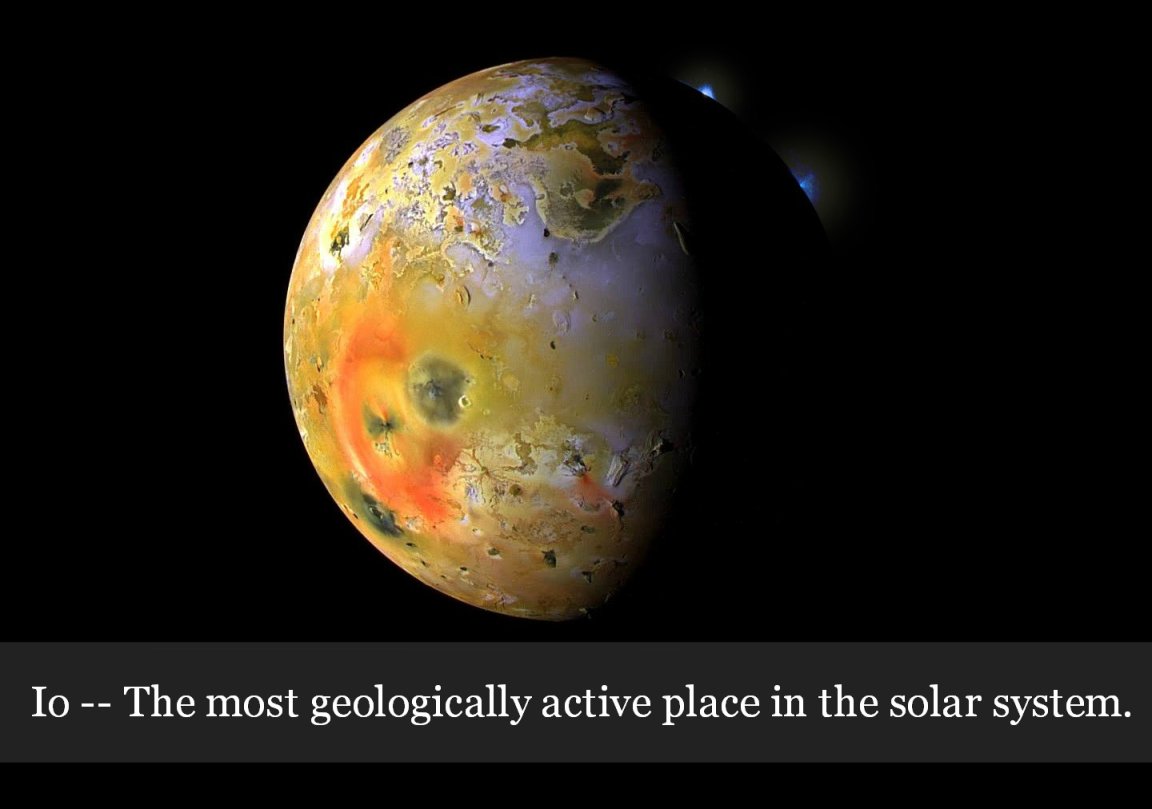

If there was a contest for the most un-Earth like world, Io would be one of the top contenders. Without a doubt, the most interesting thing about Io is its huge quantity of active volcanoes. As you can see, this volcanism makes the moon look more like a large ball of cheese (or a terribly unappealing pizza) than an actual world.
Active volcanoes are relatively unheard of in our solar system (it is largely filled with objects that are geologically dead); however, when the Voyager Spacecraft went to explore Io back in the late 70’s, it observed more than EIGHT active eruptions as it made a flyby. It even captured one on film. Since then, more than 150 active volcanoes have been detected and mapped (almost 400 are predicted to exist). The most impressive of these volcanoes is the aptly named Loki. Loki (named after the Norse god of mischief) may not be the largest volcano in our solar system (that honor would go to Olympus Mons on Mars), but it is certainly the most powerful. The volcano has a staggering diameter of 126 miles (202 km), but more incredible than its size is the molten underground lava lake feeding Loki its material. In addition to this, Io can shoot lava hundreds of miles into space. There are a number of volcanoes on this world that produce plumes of sulfur that shoot up 300 miles (500 km) above the surface.
On Earth (and most of the other objects in our solar system that still experience geological activity), the source of plate tectonics comes from the internal heating of radioactive isotope decay (Earth also capitalizes on the energy left over from the Earth’s formation); however, Io is not fueled by energy leftover from its formation, as the moon is much too small to have retained any of that accreational heat. Instead, the source of energy used to power its volcanoes comes directly from tidal stresses exerted on Io by the behemoth Jupiter. The moon orbits the Jupiter (the giant of the solar system) from a distance of about 260,000 miles (422, 000 kilometers). For comparison, the Moon orbits Earth at a distance of 239,000 miles (380,000 km), but remember, Jupiter is also A LOT larger than the Earth.
Ultimately, Jupiter’s extreme gravity (coupled with Jupiter’s other moons) puts an exorbitant amount of tidal stress on Io. making it the innermost of the four Galilean moons (the other three are Europa, Ganymede and Callisto), which also, to a smaller degree, contribute to the tidal stresses that make Io so vivacious. Additionally, on Earth, plate tectonics generally result in subsurface bodies of magma peeking out through the Earth’s crust, but on Io, tidal forces from Jupiter cause the magma to bulge out, before forcing it back down, which keep the magma in a liquid state and flowing continuously. All in all, these interactions cause Io’s surface to rise and fall by about 300 feet (100 meters) — the highest ocean tides on Earth only reach about 60 feet (18 meters).
As a result of this continuous lava flow, Io’s surface features are prone to change (including ridding the moon of impact craters). In fact, following Voyager 1’s first encounter with the moon, Voyager 2 also paid a visit, revealing that several regions were already much different than they previously were. This article is part of a series on the moons of Jupiter.